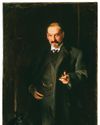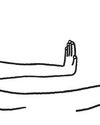
The men are saying things to one another like: Back a bit there, Tom. Mind yourself now. Alone, Ivan is standing, wanting to sit down but uncertain which of the chairs need to be rearranged still and which are in their correct places already. This uncertainty arises because the way in which the men are moving the furniture corresponds to no specific method Ivan has been able to discern. A familiar arrangement is slowly beginning to emerge—a central U shape composed of ten tables, with ten chairs along the outer rim of the shape, and a general seating area around the outside— but the process by which the men are reaching this arrangement seems haphazard. Standing on his own in the corner, Ivan thinks with no especially intense focus about the most efficient method of arranging, say, a random distribution of a given number of tables and chairs into the aforementioned shape. It’s something he has thought about before, while standing in other corners, watching other people move similar furniture around similar indoor spaces: the different approaches you could use, if you happened to be writing a computer program to maximize process efficiency. The accuracy of these particular men would be, Ivan thinks, pretty low, like actually very low.
This story is from the {{IssueName}} edition of {{MagazineName}}.
Start your 7-day Magzter GOLD free trial to access thousands of curated premium stories, and 9,000+ magazines and newspapers.
Already a subscriber ? Sign In
This story is from the {{IssueName}} edition of {{MagazineName}}.
Start your 7-day Magzter GOLD free trial to access thousands of curated premium stories, and 9,000+ magazines and newspapers.
Already a subscriber? Sign In

BADDIE ISSUES
\"Wicked\" and \"Gladiator II.\"

LET'S MAKE A DEAL
\"Death Becomes Her\" and \"Burnout Paradise.\"

ANTI HEROES
\"The Franchise,\" on HBO.

FELLOW-TRAVELLERS
The surprisingly sunny origins of the Frankfurt School.

NOW YOU SEE ME
John Singer Sargent's strange, slippery portraits of an art dealer's family.

PARIS FRIEND - SHUANG XUETAO
Xiaoguo had a terror of thirst, so he kept a glass of water on the table beside his hospital bed. As soon as it was empty, he asked me to refill it. I wanted to warn him that this was unhealthy - guzzling water all night long puts pressure on the kidneys, and pissing that much couldn't be good for his injury. He was tall, though, so I decided his insides could probably cope.

WILD SIDE
Is Lake Tahoe's bear boom getting out of hand?

GETTING A GRIP
Robots learn to use their hands.

WITHHOLDING SEX FROM MY WIFE
In the wake of [the] election, progressive women, who are outraged over Donald Trump's victory at the ballot box, have taken to social media with public, vengeful vows of chastity. - The Free Press.

DEADLINE EXTENSION
Old age, reborn.